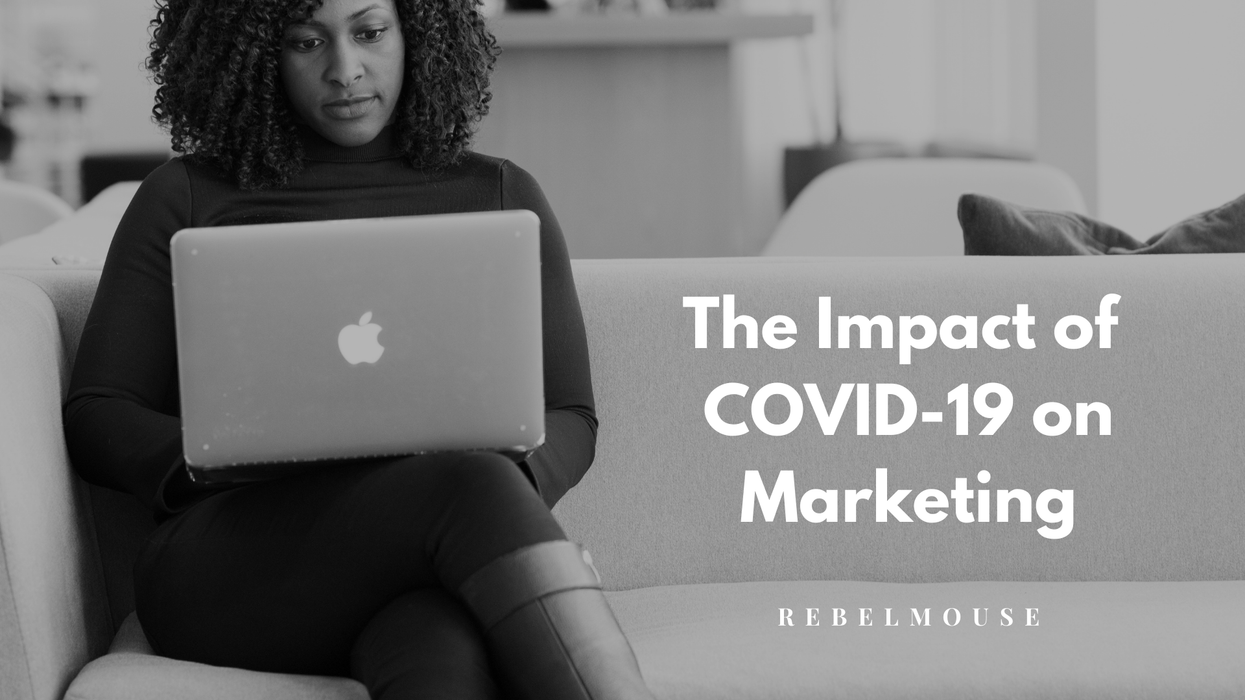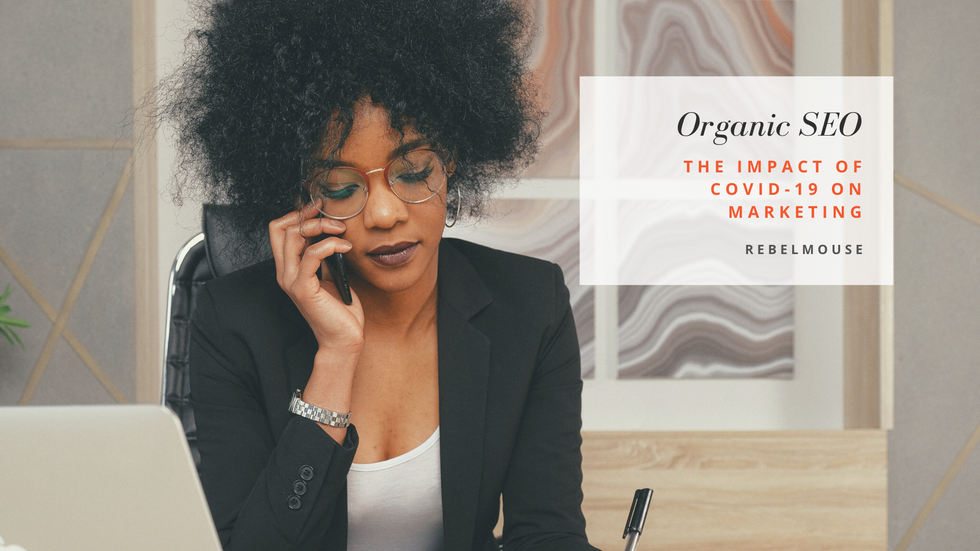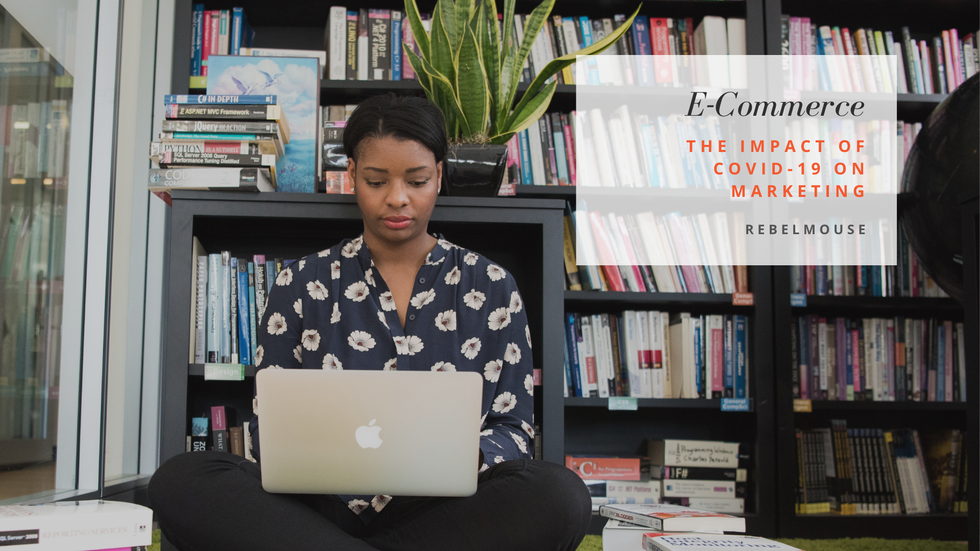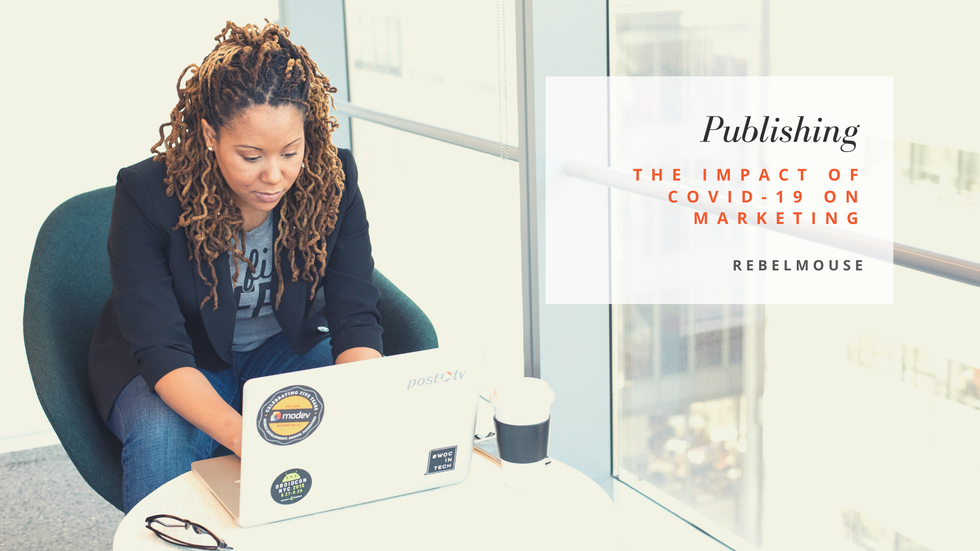As the second half of 2020 begins to pass us by, the COVID-19 pandemic continues to rage on throughout the global community. The longevity of the pandemic has left thousands of industries struggling to find an appropriate position in the marketplace that will allow them to sustain themselves alongside daily tragedy.
The pandemic is far from over, but publishers and marketers are beginning to sift through the aftershocks of what COVID-19 has done to the web. Here's a quick look at the decline in conversion growth during the first few weeks of the pandemic in the United States:
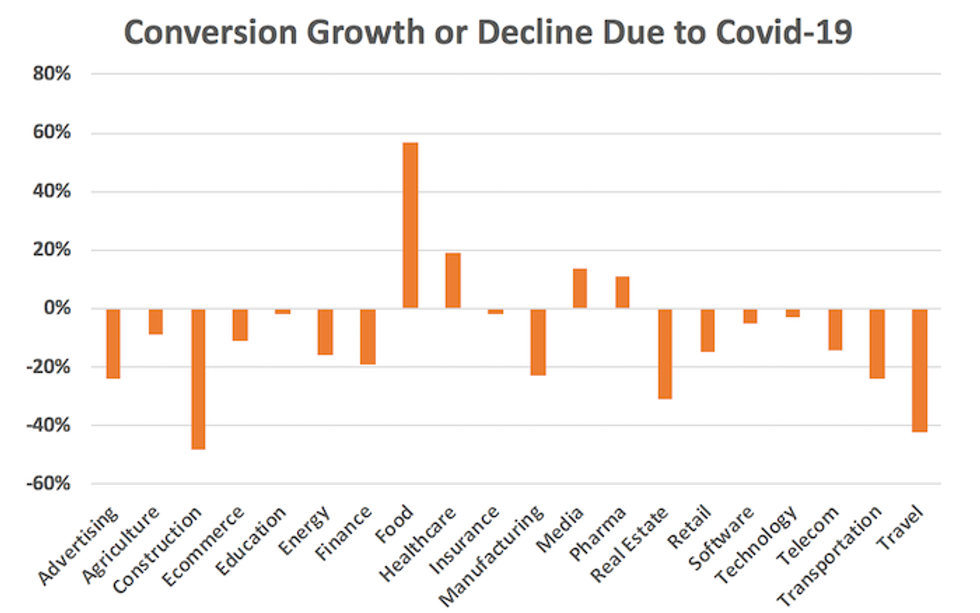
The negative impact on online industries left marketing teams scrambling to figure out how to do more with less. But with more people online than ever before, there are plenty of new opportunities for companies to figure out what exactly the new normal means for them.
The CMO Survey, a firm that tracks marketing insights, conducted a special COVID-19 survey that details current lessons learned from the pandemic from marketing leaders in the United States — and there's some good news. Most marketers agree that the new strategies they've adopted during the pandemic will continue to bring their companies opportunities long term.
There is one common theme to keep in mind as marketers navigate the rest of 2020 and beyond, and that's the unparalleled importance of building trust. That same COVID-19 CMO survey found that marketers identified trusted relationships as customers' highest priority over the next year. To meet this demand, marketers expect that customers will value a trusted relationship with a company even more than the lowest price.
With the concept of building trust as our pillar for post-pandemic marketing, let's look at how marketers and publishers can pivot their strategies to build trust and retain customers in four important areas: organic SEO, e-commerce, subscription services, and ad revenue.
Optimizing Organic SEO
While you may have experienced a dip in conversions or website traffic when the pandemic took over, search engine traffic has actually increased since the pandemic began. What's changed is what users are searching for. In the early months of 2020, it was no surprise that sites dedicated to health and wellness experienced an increase in search traffic of more than 300%.
According to Google Trends, people searching for the term "SEO," short for search engine optimization, spiked in January and February, and has continued to perform higher than usual throughout the year so far.
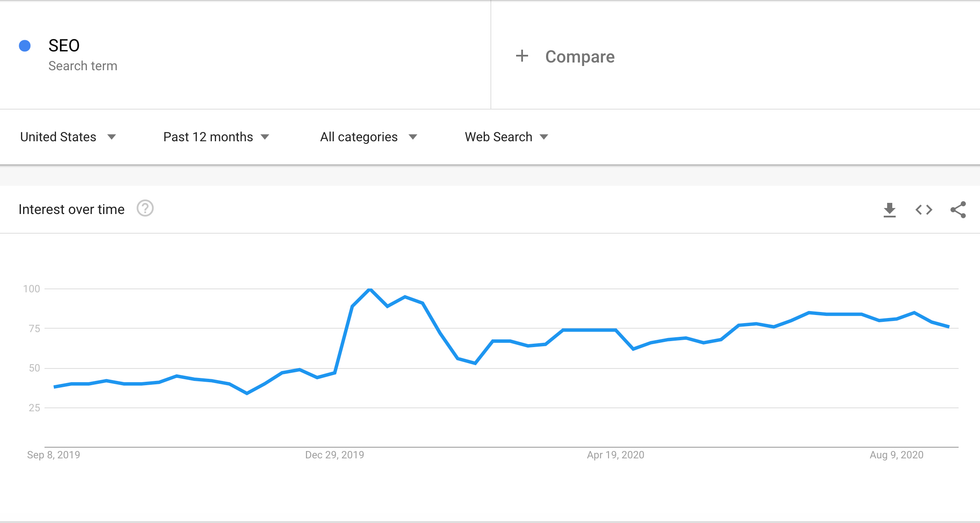
Even if you haven't seen any increases in your search performance so far this year, there are several important reasons to start investing in a search strategy during this unprecedented time. Adopting a robust search engine strategy can be a low-cost investment that yields valuable rewards. Unlike campaigns that usually have a hard start and end date, strides in organic search growth in particular can last indefinitely.
Like every other strategy in the COVID-19 era, marketers should focus on an SEO strategy that builds trust and adds value to their readers. You have heard plenty of times by now that these are uncertain times, and when things are hard to predict, users end up looking for more answers. A study from Conductor found that consumers were 131% more likely to purchase from a brand after reading quality, educational content early on in the user journey.
Publishers who take the time to recognize this shift in user behavior, and meet this demand by providing audiences with educational and problem-solving content, could see swift improvement in their search visibility. When creating new, human-centric content, an easy strategy to keep in mind is the E-A-T method. E-A-T stands for expertise, authority, and trust, which are key pillars that Google's crawler will consider when indexing sites for organic search.
Keeping your readers top of mind when creating content in 2020 could increase your performance on search long after the pandemic is over. Articles with a well-performing track record can hold tightly to their spot in Google's top search rankings. According to data from Ahrefs blog, only 1% of pages in Google's top 10 positions were less than one year old.
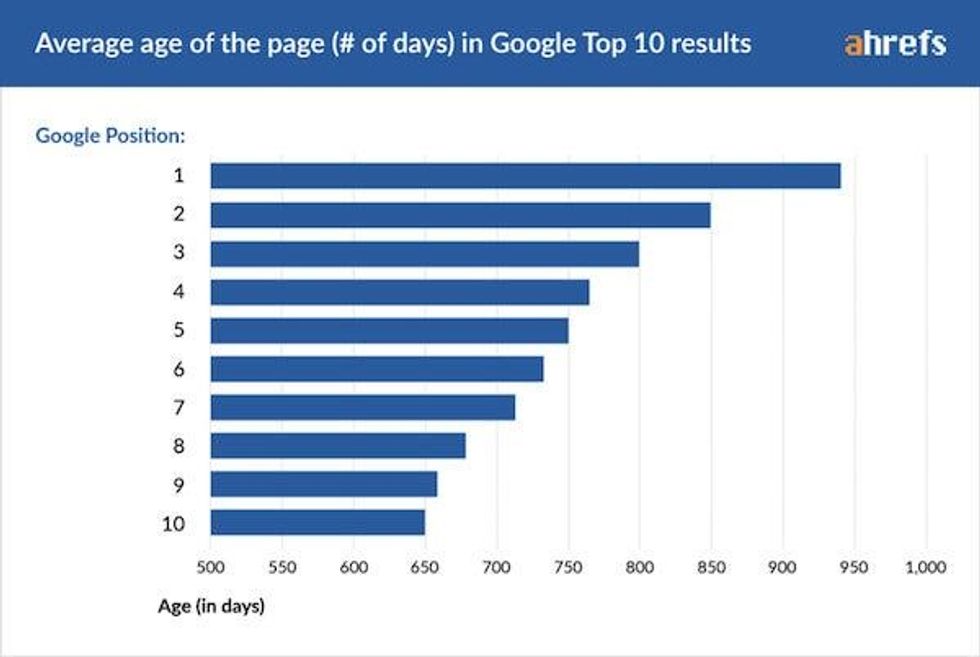
If organic SEO wasn't a priority before, take the unique circumstances of 2020 to build out meaningful evergreen content that could serve your readers for years to come.
Embracing E-commerce
With people living their lives almost entirely online in 2020, the explosive growth of e-commerce during the coronavirus outbreak has been no surprise. But the expansion has indeed been massive. The percentage of retail sales via digital channels typically goes up 1% each year. In 2020, it shot up to 28% after COVID-19 began to spread. According to NYU professor Scott Galloway, that's a decade worth of growth that occurred in an eight-week time frame.
It's also no surprise that major retailers like Walmart and Target, who sell stay-at-home essentials like workout equipment, benefited the most from this growth. To no one's surprise, Amazon reported a 40% increase in sales during the early stages of COVID-19.
Publishers previously have leveraged affiliate partnerships to get a piece of the e-commerce pie, but with readers looking for more online alternatives for their retail experiences, now is the time to dive even deeper. Readers are looking to sources they trust to make all of their choices, even if it's just what mascara to buy next.
For example, Hearst UK began offering product sampling for e-commerce campaigns in December. When the pandemic hit, those campaigns became hugely popular for beauty brands that could no longer appeal to their customers by storefront.
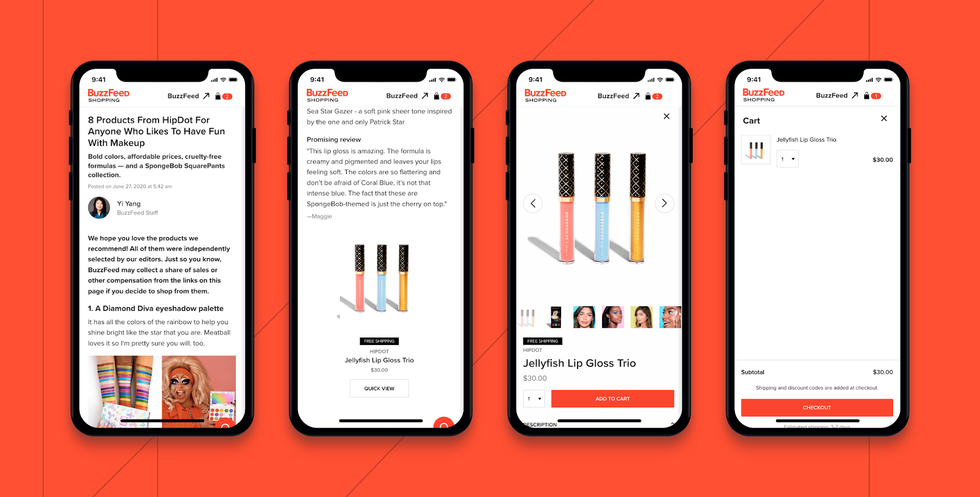
BuzzFeed says the native shopping experience is a long-term revenue solution that increases trust with their audience.
Major social platforms have also made the shift to in-app retail experiences. The summer of 2020 brought about the launch of Instagram Shop, a native shopping section of the platform that allows users to browse product recommendations based on the accounts they follow. Instagram Shop will of course offer Facebook Pay, the social giant and parent company's own payment solution.
For the majority of publishers who aren't mega sized like BuzzFeed, taking advantage of native social experiences like Instagram Shop is a good way to diversify e-commerce efforts and build new brand awareness that might not have been previously available before.
The acceleration of e-commerce in 2020 should entice publishers of all sizes to weigh the benefits of any e-commerce component, whether it be native buying, affiliate partnerships, or product reviews. It's a sure bet to increase revenue diversification and, when done effectively, build loyalty with your user base.
Sweetening Subscription-Based Models
Subscription-based models were in the midst of an uptick even before the global pandemic. Over the years, the tug of war between platforms and publishers reached its peak and has left users desperate for a modern user experience that's high performing, high quality, and clear of massive ad takeovers. Marketing in the COVID-19 world hasn't changed this. In fact, 50% of subscription model businesses have continued to grow just as fast in the pandemic world.
However, the COVID-19 climate has nudged publishers to be a bit more flexible with their subscription and premium offerings. Due to persisting financial constraints among most audiences, publishers who try to increase costs or decrease offerings could lose loyalty permanently. Expect readers to be quick to withdraw their alliances if they feel their money and time is being treated unfairly.
According to data from the Subscribed Institute, companies that made it easy for customers to make changes to their subscriptions were able to grow their customer base faster than their peers. Plus, companies that offer users an option to suspend their subscription have a 5% lower churn rate.
Providing a pleasant experience doesn't mean losing out on revenue, either. When journalist Ryan Nakashima of Bay Area News Group experimented with separating out an ad-free access option to one of their news sites for just $4 more a month, the results bore fruit.
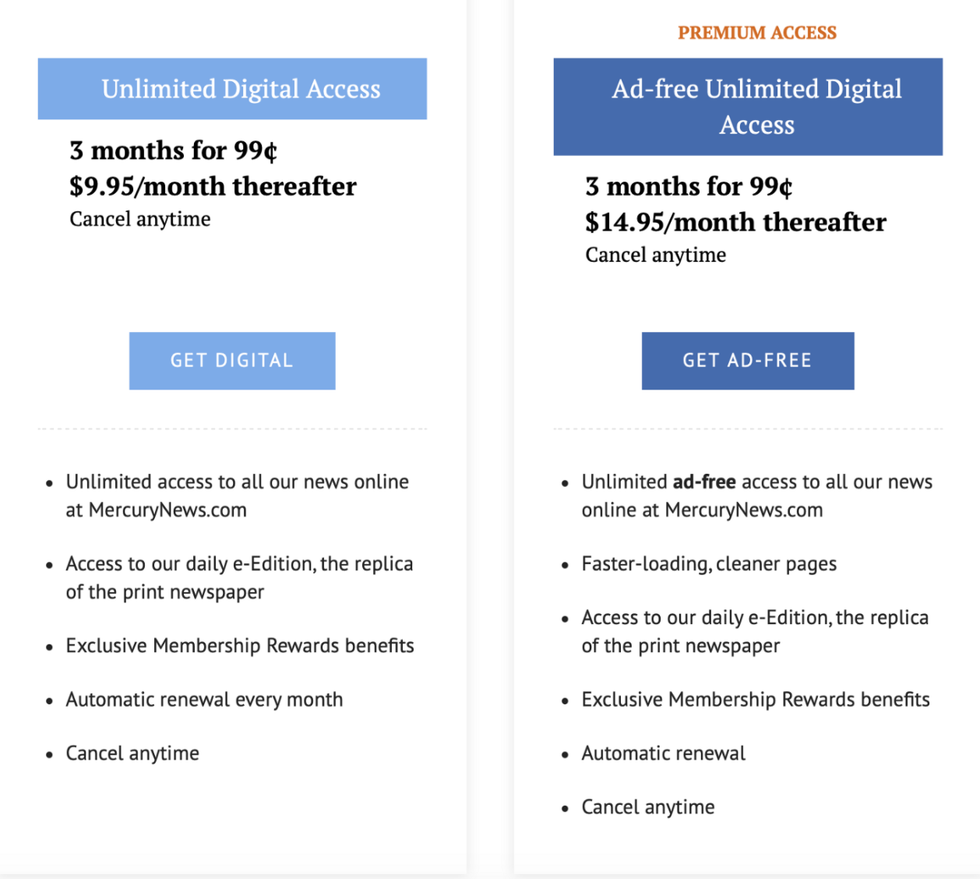
"About a fifth of new digital-only subscribers choose to pay more for ad-free, many with no discounted trial, and many have upgraded their existing plans. Email campaigns to existing subscribers are seeing strong uptake and we have thousands of ad-free subscribers now," Nakashima wrote in Poynter.
The users who chose the ad-free option also consumed 1.2 more pages per day than other subscribers, proving the point that if you put customers in control of their own experience, the payoff could be big.
Adjusting Ad Spend
When COVID-19 tightened its grip in early 2020, the digital ad world felt the effects immediately. According to an impact report from Influencer Marketing Hub, brands are expected to decrease ad spend by 69% in 2020, and 65% of brands noticed a decrease in revenue once the pandemic hit.
There is no way around it, COVID-19 is a devastating blow to monetization strategies for companies and publishers of all sizes. Now, as the web adjusts to life in the new normal, there are ways to adapt to the new ad-buying climate.
Digital marketing expert Neil Patel found that the dip in advertisers has made online ads less expensive. Small businesses and publishers who are able to maintain some ad spend could see a bigger return on investment than ever before.
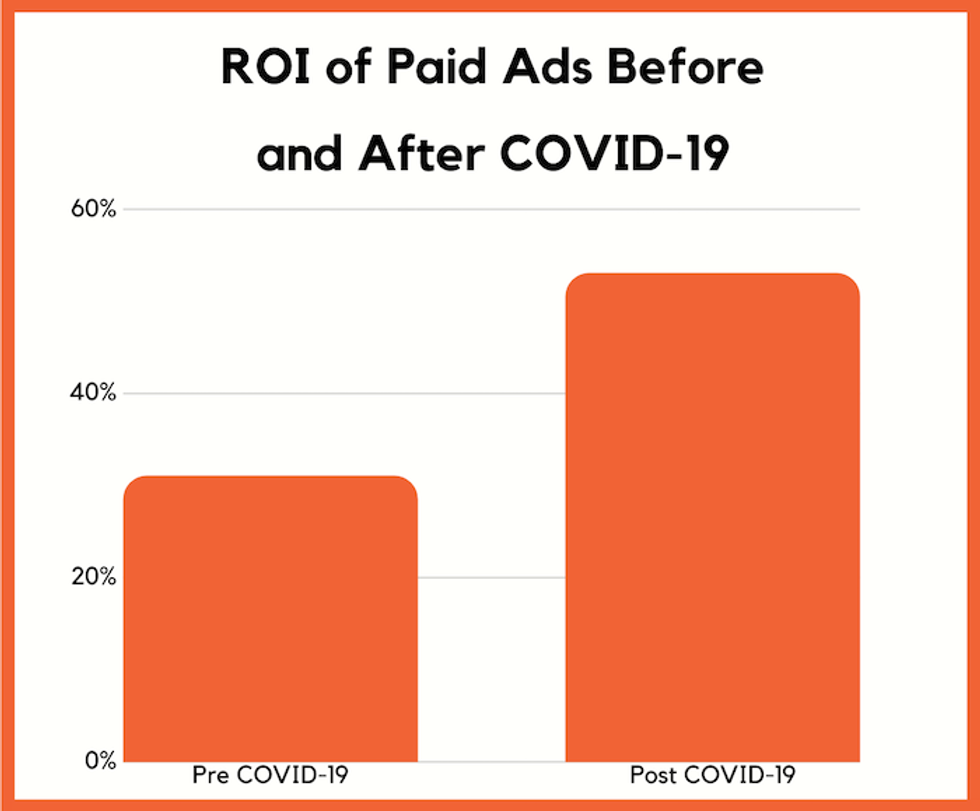
Unfortunately, most publishers won't be able to continue on with the exact same digital advertising plan that they had before 2020. Like every area of marketing during COVID-19, it's important to pivot and recognize industry shifts brought on by the pandemic.
For example, social media has undergone a bit of a reawakening during the pandemic. Social platforms experienced growth unlike they have in recent years as most of the world began to spend their lives almost entirely online. Facebook's digital ad revenues are expected to grow 4.9% to $31.4 billion, thanks to growth from Instagram. Facebook's share of the online ad market is also expected to increase from 22.7% in 2018 to 23.4% in 2020, according to the American Marketing Association (AMA).
The massive grip of the social ad revenue market isn't new, but the latest pandemic spike has marketers shifting to new digital and social expectations. The AMA also reports that marketers have increased their social budgets by 74% since February. Since the shift to social, for the first time ever, social media's contribution to company performance rose a startling 24% since February.
Keep in mind that the theme of building trust with your audience during uncertainty rings true even when considering your monetization strategy. According to data from IAB, 63% of advertisers are adjusting their messaging to mission-based and cause-based marketing. So however you do choose to rework your advertising strategy, continue to make your users' experience a top priority.
Publishing During a Pandemic
To build trust in the COVID-19 era, publishers must be agile and nimble enough to pivot quickly. This isn't always easy as companies deal with devastating economic blows, smaller teams, and new uncertainties each day. Taking on a new content strategy alone is a tall order, not to mention adjusting ad plans, considering new revenue streams, and increasing SEO efforts simultaneously.
At RebelMouse, we keep up with industry changes — including those incurred by massive world events like the coronavirus outbreak — so our publishers can focus on creating content that resonates with their readers no matter the climate.
Shortly before COVID-19 hit, we adjusted our approach to page speed to ensure we power the highest-performing sites on the web. Once the pandemic took hold, we created a live-blog solution so publishers in our site network could distribute updates to their audiences quickly and maintain visibility on search.
Our publishing platform and creative agency has a modern solution for every pandemic pain point. If you're struggling to make sense of what happened to your business during 2020, request a proposal today and let's start working together to improve your site performance, web traffic, SEO strategy, and any other area of your digital marketing that needs support.
